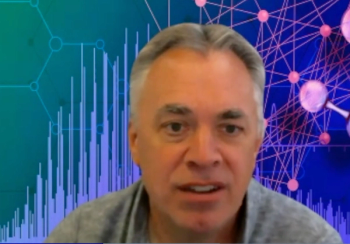
- Spectroscopy-06-01-2005
- Volume 20
- Issue 6
The Baseline: The Solar Spectrum
Spectroscopists separate light from the sun into spectra and look for the presence or absence of particular lines that give hints regarding its chemical composition. The same method can be applied to studying the composition of other matter in the universe.
In a previous column (1), I made a comment that virtually all of astronomy is spectroscopy. Well, this "Baseline" column should drive that point home.
Glance up at the sun (quickly — I don't want to be responsible for anyone going blind!), and what do you see? A yellow-white glowing ball of light in the sky. Spectroscopists, however, don't just look at the sun. They take the light and run it through a monochromator, separating it into its constituent colors, and look for the presence or absence of particular lines of light that give hints regarding the chemical composition of the sun.
Figure 1: A high resolution spectrum of the sun, measured with the Fourier transform spectrometer at the McMath-Pierce Solar Facility at Kitt Peak National Observatory, near Tucson, Arizona. (Credit: N.A.Sharp, National Optical Astronomy Observatory/ National Solar Observatory /Kitt Peak Fourier Transform Spectrometer/Association of Universities for Research in Astronomy/National Science Foundation. Reprinted with permission.)
Astronomers at the Kitt Peak National Observatory (Tuscon, AZ) have done just that. On the facing page is a high-resolution visible spectrum of the sun, from about 7000 Å to about 4000 Å, as measured by Kitt Peak astronomers. Digital versions of this spectrum are available at the National Optical Astronomy Observatory website (
The spectrum of the sun had been observed for millennia as rainbows, but was long not recognized as such. In 1671–1672, Isaac Newton demonstrated that light from the sun was composed of a range of colors that could be separated by a prism. Previously, it was thought that the prism itself imparted color on white light.
In 1802, English chemist William Wollaston first noted dark lines in a rainbow caused by sunlight. In 1814, German physicist Joseph von Fraunhofer devised a solar spectroscope (scooping Bunsen and Kirchhoff's development of the spectroscope by about 45 years) to study the solar spectrum. He mapped over 500 lines, measuring their wavelengths and assigning the obvious lines with capital letters A through K and weaker lines with other letters. These lines are still referred to as the Fraunhofer lines, perhaps the most famous one being the yellow sodium D lines.
It wasn't until 1860, however, that Bunsen and Kirchhoff connected the wavelengths of light emitted or absorbed to specific chemical elements. The lines in the solar spectrum, therefore, indicated that certain chemical elements were present on the Sun absorbing light, and the Fraunhofer lines were quickly assigned to a variety of chemical elements, from H to Ti and more. In fact, helium was first detected in the solar spectrum in 1868, and assigned by English chemist Norman Lockyer to an as-yet-undiscovered element (helium was isolated on terra firma in 1895 by English chemist William Ramsey).
It is unfortunate that the spectrum in Figure 1 does not have a scale, or that it is unannotated with identifications of the species causing each absorption. (Lists of assignments are available through the NOAO Web site, but as far as I can tell, annotated spectra are not.) Annotating this spectrum would be a major job in any case, but perhaps someone with too much time on their hands can annotate at least the major absorptions.
How do we know what matter exists in other parts of the universe? By the spectra of other stars, of course. The NOAO Web site has similar spectra for other stars, and with corrections for red- or blue-shifts, the spectral lines show the same chemical elements out there as there are right in our own region of space. See how fundamental spectroscopy is to understanding our universe?
David Ball is a professor of chemistry at Cleveland State University in Ohio. Many of his "Baseline" columns have been reprinted in book form by SPIE Press as The Basics of Spectroscopy, available through the SPIE Web Bookstore at
Reference
1. D.W. Ball, Spectroscopy 20(1), 52 (2005).
Articles in this issue
over 20 years ago
53rd Annual ASMS Wrap UpNewsletter
Get essential updates on the latest spectroscopy technologies, regulatory standards, and best practices—subscribe today to Spectroscopy.




